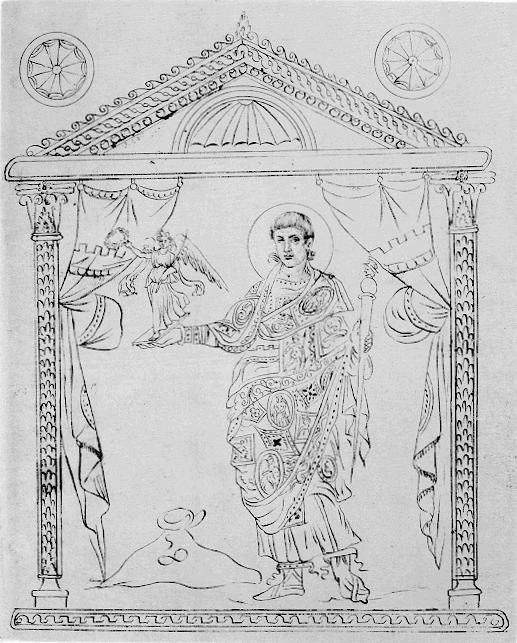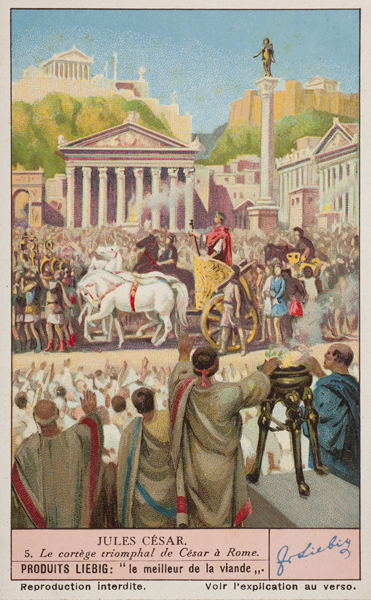|
Asterius Of Amasia
Saint Asterius of Amasea (Greek: Άστέριος Αμασείας, c. 350c. 410 AD) was made Bishop of Amasea between 380 and 390 AD, after having been a lawyer. "Writers from the time of Augustine", Villanova.edu. (''see below:'' References). "Asterius of Amasea, Sermons (1904). Preface to the online edition", Roger Pearse (translator), Ipswich, UK, December 2003, webpage: ECWritings-Aste He was born in Cappadocia and probably died in Amasea in modern Turkey, then in Pontus. Significant portions of his lively sermons survive, which are especially interesting from the point of view of art history, and social life in his day. Asterius, Bishop of Amasea is not to be confused with the Arian polemicist Asterius the Sophist. His feast day is October 30. Life and work Asterius of Amasea was the younger contemporary of Amphilochius of Iconium and the three great Cappadocian Fathers. Little is known about his life, except that he was educated by a Scythian slave. Like Amp ... [...More Info...] [...Related Items...] OR: [Wikipedia] [Google] [Baidu] |
Late Greek
Late Greek refers to writings in the Greek language in Late Antiquity and the Early Byzantine period; and in other words, from about the late 2nd century AD until about the late 7th century AD.See the definitions of "Late Greek" aDictionary.comanTheFreeDictionary.com Those two websites have the ''American Heritage Dictionary'', the ''Random House Dictionary'', and the ''Collins English Dictionary''. Their definitions are approximately the same. At the dictionary aMerriam-Webster.comthe definition of "Late Greek" is "the Greek language as used in the third to sixth centuries", which is a considerably narrower time-period than what is in the other dictionaries. The intellectual center of Late Greek was Alexandria in Egypt. Alexandria came under Arabic rule starting in the 640s AD, which is sometimes taken as the ending-point of the Late Greek period. In terms purely of linguistics and language style, writings in Late Greek were conservative, whereas style began to change during the 8t ... [...More Info...] [...Related Items...] OR: [Wikipedia] [Google] [Baidu] |
Timomachus
Timomachus of Byzantium (or Timomachos, a transliteration of Τιμόμαχος) was an influential painter of the first century BCE. Works Pliny the Elder, in his ''Naturalis Historia'' (35.136), records that Julius Caesar had acquired two paintings by Timomachus, one of ''Ajax'' during his madness, and a ''Medea'' meditating the slaying of her children, which cost him the considerable sum of 80 talents. Scholars have connected these works with the carrying away of a ''Medea'' and ''Ajax'' from Cyzicus, an ancient port of Anatolia, mentioned in Cicero's ''In Verrem'' (2.4.135), and propose that Caesar acquired them there, shortly after his victory at Pharsalus. The paintings, "a pair linked to each other by their rage", were installed in front of the Temple of Venus Genetrix, and remained there until their destruction by fire in 80 CE. The '' Anthology of Planudes'' preserves a number of epigrams on the ''Medea'', which note its incomplete state, and praise its emotional inte ... [...More Info...] [...Related Items...] OR: [Wikipedia] [Google] [Baidu] |
Tyrian Purple
Tyrian purple ( grc, πορφύρα ''porphúra''; la, purpura), also known as Phoenician red, Phoenician purple, royal purple, imperial purple, or imperial dye, is a reddish-purple natural dye. The name Tyrian refers to Tyre, Lebanon. It is secreted by several species of predatory sea snails in the family Muricidae, rock snails originally known by the name 'Murex'. In ancient times, extracting this dye involved tens of thousands of snails and substantial labor, and as a result, the dye was highly valued. The colored compound is 6,6′-dibromoindigo. History Biological pigments were often difficult to acquire, and the details of their production were kept secret by the manufacturers. Tyrian purple is a pigment made from the mucus of several species of Murex snail. Production of Tyrian purple for use as a fabric dye began as early as 1200 BCE by the Phoenicians, and was continued by the Greeks and Romans until 1453 CE, with the fall of Constantinople. The pigment was expensiv ... [...More Info...] [...Related Items...] OR: [Wikipedia] [Google] [Baidu] |
Silk
Silk is a natural protein fiber, some forms of which can be woven into textiles. The protein fiber of silk is composed mainly of fibroin and is produced by certain insect larvae to form cocoons. The best-known silk is obtained from the cocoons of the larvae of the mulberry silkworm ''Bombyx mori'' reared in captivity (sericulture). The shimmering appearance of silk is due to the triangular prism-like structure of the silk fibre, which allows silk cloth to refract incoming light at different angles, thus producing different colors. Silk is produced by several insects; but, generally, only the silk of moth caterpillars has been used for textile manufacturing. There has been some research into other types of silk, which differ at the molecular level. Silk is mainly produced by the larvae of insects undergoing complete metamorphosis, but some insects, such as webspinners and raspy crickets, produce silk throughout their lives. Silk production also occurs in hymenoptera ( bee ... [...More Info...] [...Related Items...] OR: [Wikipedia] [Google] [Baidu] |
Periphrasis
In linguistics, periphrasis () is the use of one or more function words to express meaning that otherwise may be expressed by attaching an affix or clitic to a word. The resulting phrase includes two or more collocated words instead of one inflected word. The word ''periphrasis'' originates from the Greek word ''periphrazein'', which means ''talking around''. Periphrastic forms are a characteristic of analytic languages, whereas the absence of periphrasis is a characteristic of synthetic languages. While periphrasis concerns all categories of syntax, it is most visible with verb catena. The verb catenae of English (verb phrases constructed with auxiliary verbs) are highly periphrastic. Examples The distinction between inflected and periphrastic forms is usually illustrated across distinct languages. However, comparative and superlative forms of adjectives (and adverbs) in English provide a straightforward illustration of the phenomenon. For many speakers, both the simple and ... [...More Info...] [...Related Items...] OR: [Wikipedia] [Google] [Baidu] |
Hyperbole
Hyperbole (; adj. hyperbolic ) is the use of exaggeration as a rhetorical device or figure of speech. In rhetoric, it is also sometimes known as auxesis (literally 'growth'). In poetry and oratory, it emphasizes, evokes strong feelings, and creates strong impressions. As a figure of speech, it is usually not meant to be taken literally. Etymology 'Hyperbole' is derived from the grc, ''huperbolḗ'' by way of Latin. The word is composed from ''hupér'' 'above, beyond' and ''bállō'' 'throw'. Unlike most English words beginning with ''hyper-'', it is stressed on the second syllable. The first known use is in the 15th century. 'Hype' is a shortened version. Usage Hyperbole is often used for emphasis or effect. In casual speech, it functions as an intensifier: saying "the bag weighed a ton" simply means that the bag was extremely heavy. The rhetorical device may be used for serious or ironic or comic effects. Understanding hyperbole and its use in context can help un ... [...More Info...] [...Related Items...] OR: [Wikipedia] [Google] [Baidu] |
History Of Silk
The production of silk originated in Neolithic China within the Yangshao culture (4th millennium BCE). Though it would later reach other places in the world, the art of silk production remained confined to China until the Silk Road opened at 114 BC, though China maintained its virtual monopoly over silk production for another thousand years. The use of silk within China was not confined to clothing alone, and silk was used for a number of applications, such as writing. Within clothing, the color of silk worn also held social importance, and formed an important guide of social class during the Tang dynasty. Silk cultivation spread to Japan around 300 AD, and, by 552 AD, the Byzantine Empire managed to obtain silkworm eggs and were able to begin silkworm cultivation; the Arabs also began to manufacture silk at the same time. As a result of the spread of sericulture, Chinese silk exports became less important, although they still maintained dominance over the luxury silk market. The C ... [...More Info...] [...Related Items...] OR: [Wikipedia] [Google] [Baidu] |
Byzantine Clothing
Byzantine dress changed considerably over the thousand years of the Empire, but was essentially conservative. Popularly, Byzantine dress remained attached to its classical Greek roots with most changes and different styles being evidenced in the upper strata of Byzantine society always with a touch of the Hellenic environment. The Byzantines liked colour and pattern, and made and exported very richly patterned cloth, especially Byzantine silk, woven and embroidered for the upper classes, and resist-dyed and printed for the lower. A different border or trimming round the edges was very common, and many single stripes down the body or around the upper arm are seen, often denoting class or rank. Taste for the middle and upper classes followed the latest fashions at the Imperial Court. As in the West during the Middle Ages, clothing was very expensive for the poor, who probably wore the same well-worn clothes nearly all the time;Payne, Blanche; Winakor, Geitel; Farrell-Beck Jane: ' ... [...More Info...] [...Related Items...] OR: [Wikipedia] [Google] [Baidu] |
Dives And Lazarus
The rich man and Lazarus (also called the parable of Dives and Lazarus or Lazarus and Dives) is a parable of Jesus from the 16th chapter of the Gospel of Luke. Speaking to his disciples and some Pharisees, Jesus tells of an unnamed rich man and a beggar named Lazarus. When both die, the rich man goes to Hell and implores Abraham to send Lazarus from his side in Heaven to warn the rich man's family from sharing his fate. Abraham replies, "If they do not listen to Moses and the Prophets, they will not be convinced even if someone rises from the dead." Along with the parables of the Ten Virgins, Prodigal Son The Parable of the Prodigal Son (also known as the parable of the Two Brothers, Lost Son, Loving Father, or of the Forgiving Father) is one of the parables of Jesus Christ in the Bible, appearing in Luke 15:11–32. Jesus shares the parable with ..., and Parable of the Good Samaritan, Good Samaritan, the rich man and Lazarus was one of the most frequently illustrated para ... [...More Info...] [...Related Items...] OR: [Wikipedia] [Google] [Baidu] |
Ekphrasis
The word ekphrasis, or ecphrasis, comes from the Greek for the written description of a work of art produced as a rhetorical or literary exercise, often used in the adjectival form ekphrastic. It is a vivid, often dramatic, verbal description of a visual work of art, either real or imagined. Thus, "an ekphrastic poem is a vivid description of a scene or, more commonly, a work of art." In ancient times, it might refer more broadly to a description of any thing, person, or experience. The word comes from the Greek ἐκ ''ek'' and φράσις ''phrásis'', 'out' and 'speak' respectively, and the verb ἐκφράζειν ''ekphrázein'', 'to proclaim or call an inanimate object by name'. The works of art described, or evoked, may be real or imagined; sometimes it is now hard to tell. Ancient ekphrastic writing can be useful evidence for art historians, especially where paintings are concerned, as virtually no original Greco-Roman examples survive. Ekphrasis has been consi ... [...More Info...] [...Related Items...] OR: [Wikipedia] [Google] [Baidu] |
Canvas
Canvas is an extremely durable plain-woven fabric used for making sails, tents, marquees, backpacks, shelters, as a support for oil painting and for other items for which sturdiness is required, as well as in such fashion objects as handbags, electronic device cases, and shoes. It is popularly used by artists as a painting surface, typically stretched across a wooden frame. Modern canvas is usually made of cotton or linen, or sometimes polyvinyl chloride (PVC), although historically it was made from hemp. It differs from other heavy cotton fabrics, such as denim, in being plain weave rather than twill weave. Canvas comes in two basic types: plain and duck. The threads in duck canvas are more tightly woven. The term ''duck'' comes from the Dutch word for cloth, ''doek''. In the United States, canvas is classified in two ways: by weight (ounces per square yard) and by a graded number system. The numbers run in reverse of the weight so a number 10 canvas is lighter than number ... [...More Info...] [...Related Items...] OR: [Wikipedia] [Google] [Baidu] |
Icon
An icon () is a religious work of art, most commonly a painting, in the cultures of the Eastern Orthodox, Oriental Orthodox, and Catholic churches. They are not simply artworks; "an icon is a sacred image used in religious devotion". The most common subjects include Christ, Mary, saints and angels. Although especially associated with portrait-style images concentrating on one or two main figures, the term also covers most religious images in a variety of artistic media produced by Eastern Christianity, including narrative scenes, usually from the Bible or the lives of saints. Icons are most commonly painted on wood panels with egg tempera, but they may also be cast in metal, carved in stone, embroidered on cloth, done in mosaic or fresco work, printed on paper or metal, etc. Comparable images from Western Christianity can be classified as "icons", although "iconic" may also be used to describe a static style of devotional image. In the Greek language, the term for icon paintin ... [...More Info...] [...Related Items...] OR: [Wikipedia] [Google] [Baidu] |






_(cropped%2C_Dives_and_Lazarus).jpg)


